
| |
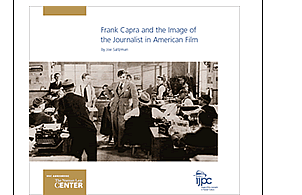
|
Frank Capra and the Image of the Journalist in American Film
By Joe Saltzman
Table of Contents. . . . . . . . .D1
Foreward. . . . . . . . . . . . . . . D2
Introduction to IJPC. . . . . . D3
Excerpts . . . . . . . . . . . . . . . .D4
Critical Acclaim. . . . . . . . . . D5
Order the Book. . . . . . . . . . .D6
(If you have any problems ordering the book or opening any document, please e-mail .(JavaScript must be enabled to view this email address) )
FRANK CAPRA AND THE IMAGE OF THE JOURNALIST IN AMERICAN FILM
THE MALE JOURNALISTS
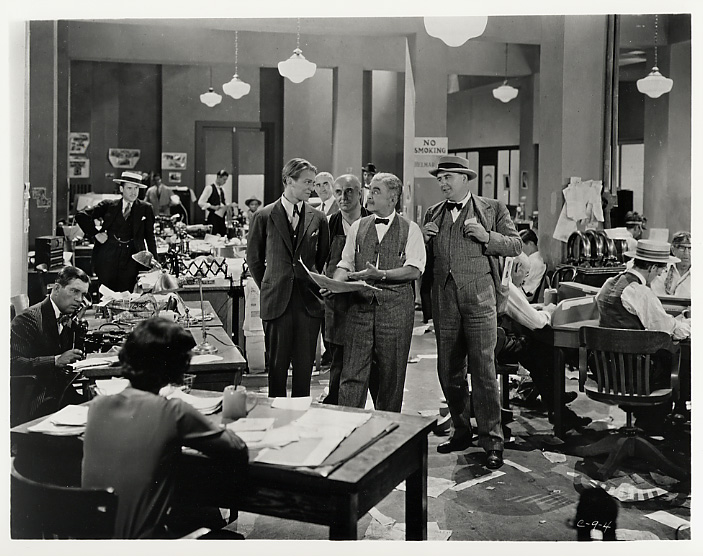
In the middle of the Times city room in The Power of the Press (Columbia Pictures, 1928), the city editor (Robert Edison) congratulates cub reporter Clem Rogers (Douglas Fairbanks Jr.) for getting his first page-one story as the more seasoned reporters gripe that it was all beginner's luck.
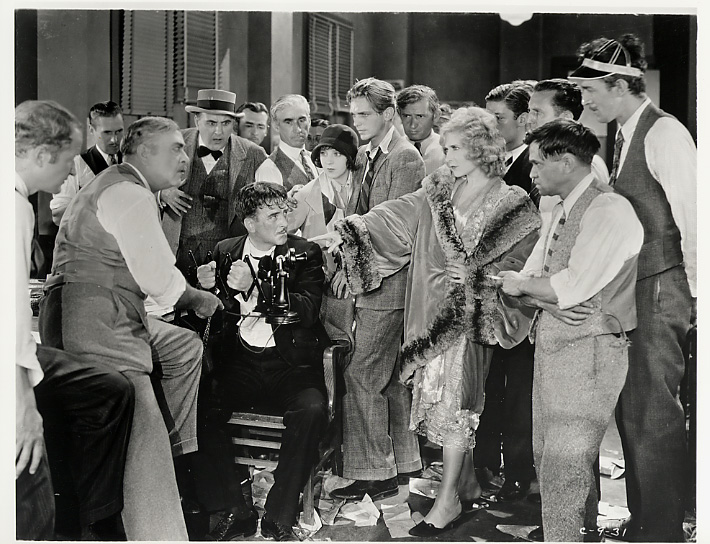
Times cub reporter Clem Rogers (Douglas Fairbanks Jr.) brings in the DA's killer and forces him to confess in the crowded city room as the city editor (Robert Edeson) grills the criminal before the police arrive in The Power of the Press (Columbia Pictures, 1928). The man in the hat watching the action is veteran reporter Bill Johnson (Del Henderson).
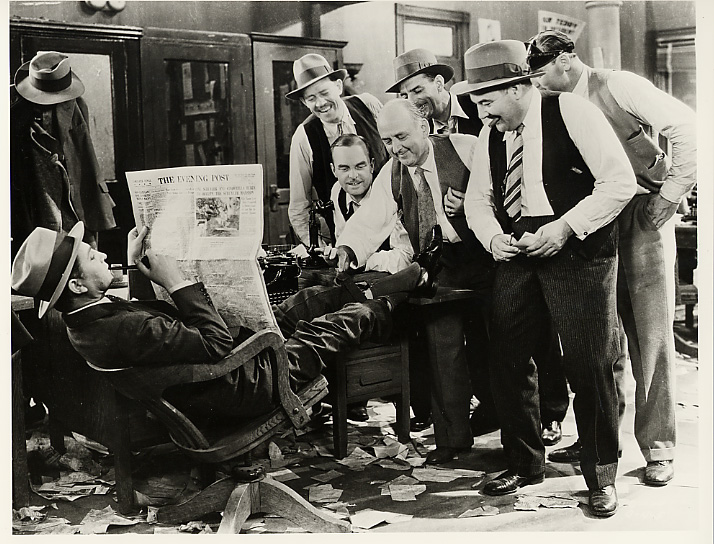
Reporters and Editors of the Evening Post razz Stew Smith (Robert Williams) about his newly acquired gold garters after he secretly marries an heiress in Platinum Blonde (Columbia Pictures, 1931).
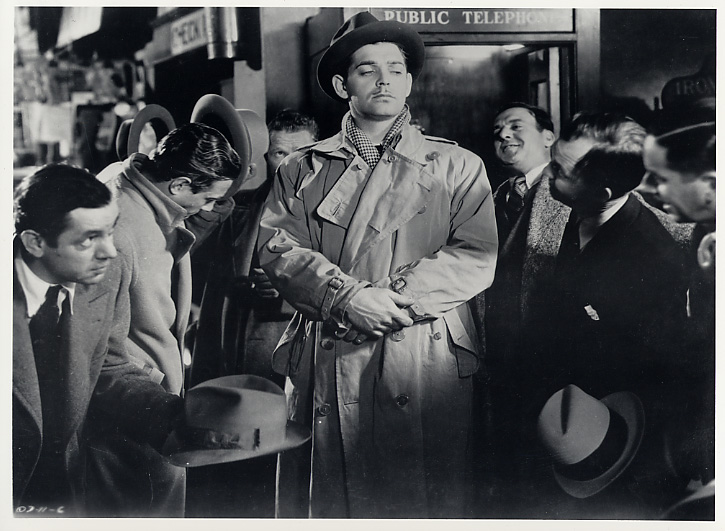
Colleagues congratulate a drunken Peter Warne (Clark Gable) for telling off his editor in It Happened One Night (Columbia Pictures, 1934), but the editor never heard Warne's tirade because he hung up on Warne before it began.
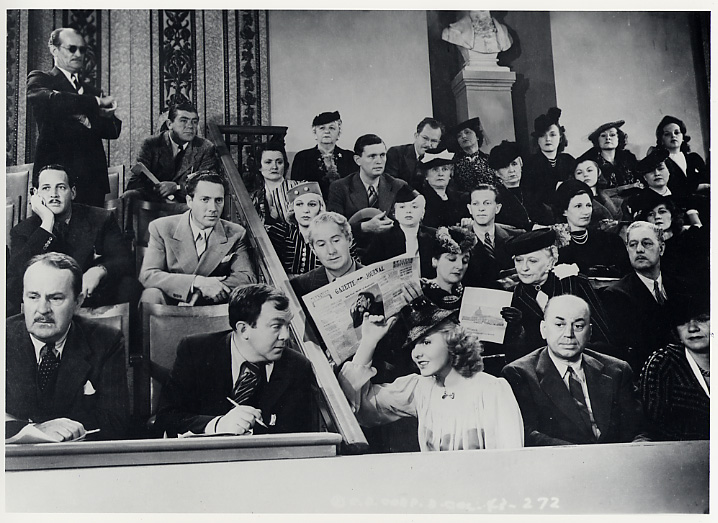
Reporter Diz Moore (Thomas Mitchell) congratulates the senator's secretary (Jean Arthur) in the Senate press gallery on helping the "ambulance chasers" make her boss look ridiculous in Mr. Smith Goes to Washington (Columbia Pictures, 1939).
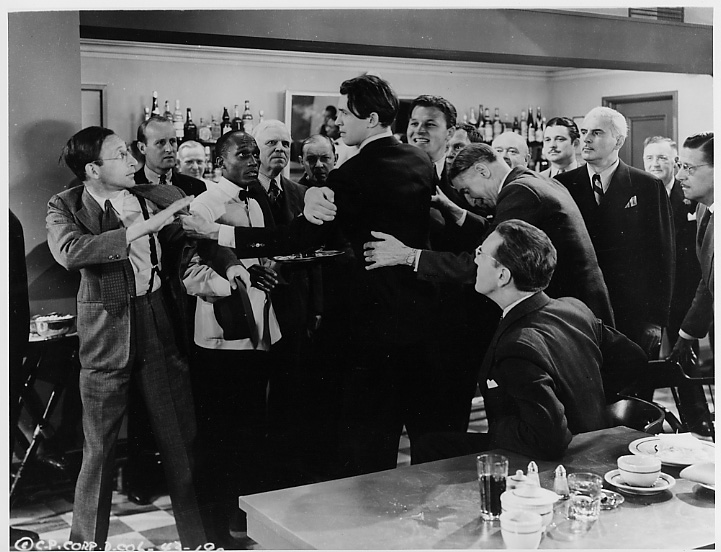
Senator Smith goes on a one-man rampage against the reporters who ridiculed him in the newspapers. Nosey (Charles Lane) runs into the National Press Club in Washington, DC, but a mob of reporters grabs Smith before he can punch the reporter in the mouth in Mr. Smith Goes to Washington (Columbia Pictures, 1939).
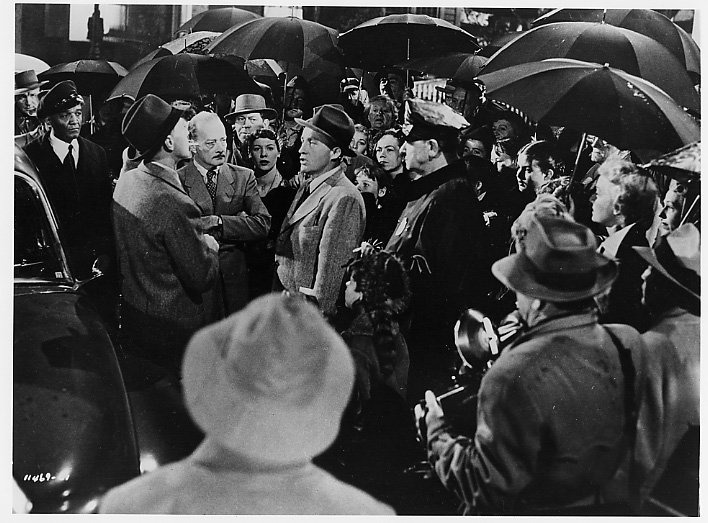
In Here Comes the Groom (Paramount Pictures, 1951), reporter Pete Garvey (Bing Crosby) concocts a real estate fraud and, with the help of his editor, George Degnan (Robert Keith), tries to discredit his former girlfriend's fiance. The real estate tycoon shows up to end the charade and the misuse of the press.
THE FEMALE JOURNALISTS:
HOLLYWOOD'S SOB SISTERS
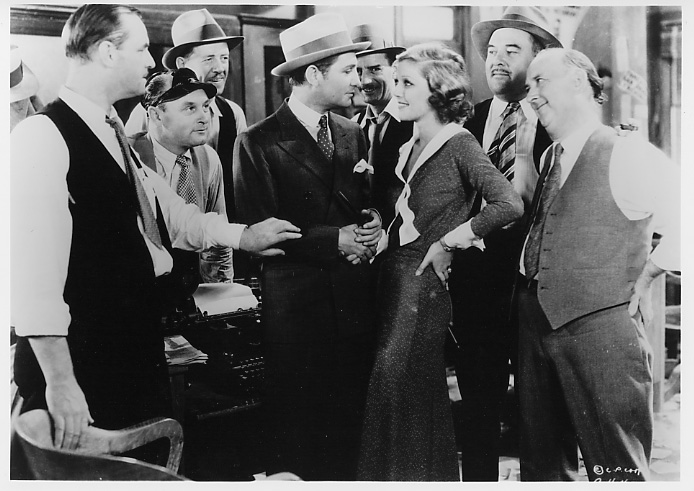
In Platinum Blonde (Columbia Pictures, 1931), Gallagher (Loretta Young) is "just one of the boys" sharing bylines in the city room with Stew Smith (Robert Williams) and the rest of the male staff.
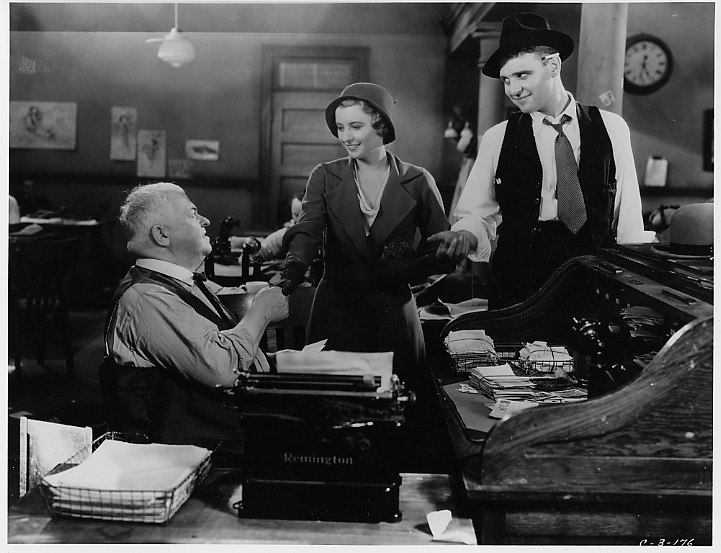
In Forbidden (Columbia Pictures, 1932), Nick, alias "Mary Sunshine" (Harry Holman) turns over his job as advice-to-the-lovelorn columnist to Lulu Smith (Barbara Stanwyck) at the request of Daily Record city editor Al Holland (Ralph Bellamy).
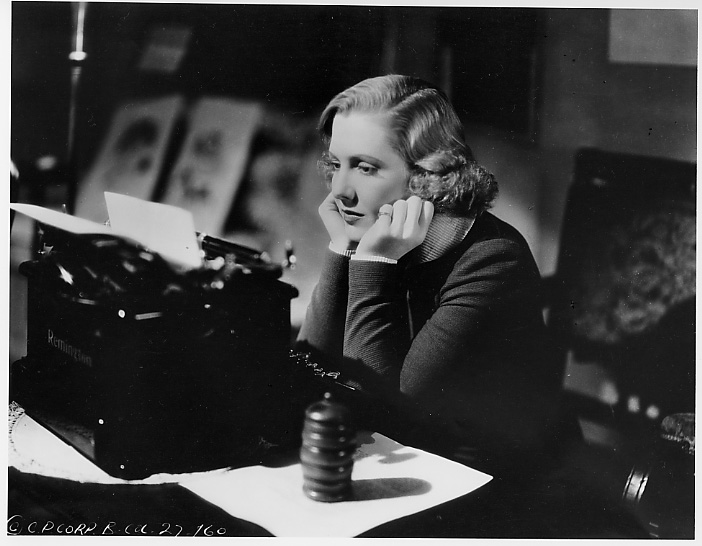
Babe Bennett (Jean Arthur), a mercenary, wisecracking reporter who will do anything to get a story, has trouble writing her latest scoop after she falls in love with the "dumbest, stupidest, most imbecilic idiot in the world" in Mr. Deeds Goes to Town (Columbia, 1936).
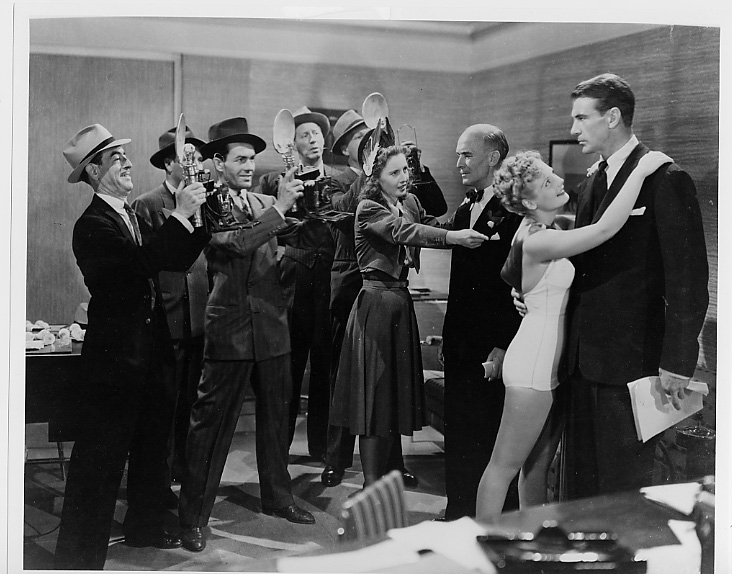
Ann Mitchell (Barbara Stanwyck), editor Henry Connell (James Gleason), and a gaggle of news photographers set up publicity shots for the fake John Doe (Gary Cooper) in an effort to win public approval in Meet John Doe (Frank Capra Productions, 1941). The newspaper stunt snowballs into a national phenomenon.
THE EDITORS
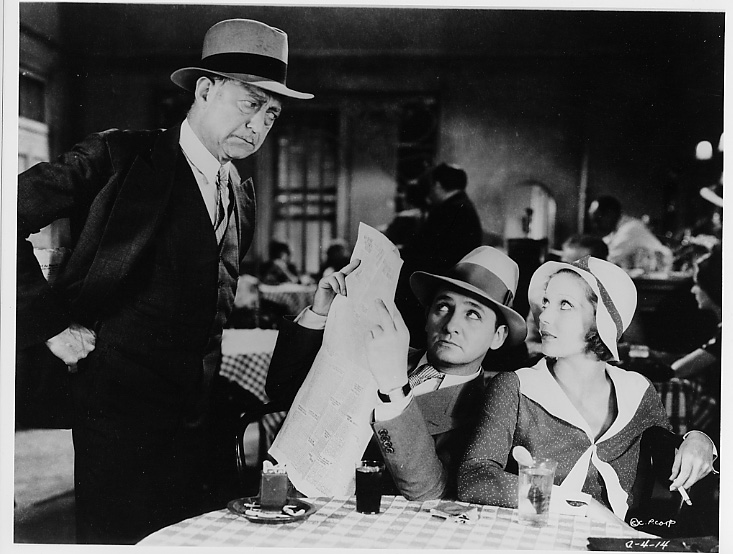
Post city editor Conroy (Edmund Breese) tracks down his star reporter, Stew Smith (Robert Williams), in a bar and reads him the riot act as sob sister Gallagher (Loretta Young) secretly agrees with the editor in Platinum Blonde (Columbia Pictures, 1931).
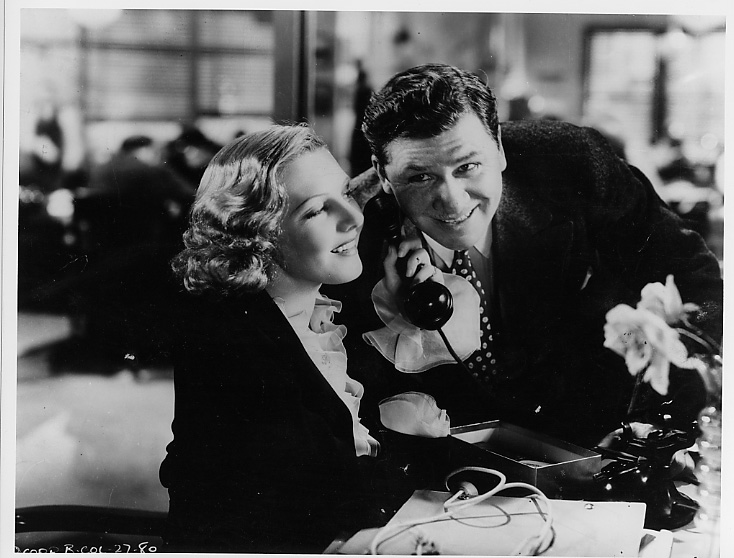
Daily Mail city editor MacWade (George Bancroft) listens in on a phone call by his star reporter Babe Bennett (Jean Arthur), who is scooping the town with her exclusive stories about a new reclusive millionaire in Mr. Deeds Goes to Town (Columbia Pictures, 1936).
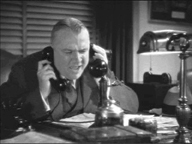
New York Mail city editor Joe Gordon (Charles C. Wilson) talks to two reporters at the same time to get the story straight in It Happened One Night (Columbia Pictures, 1934).
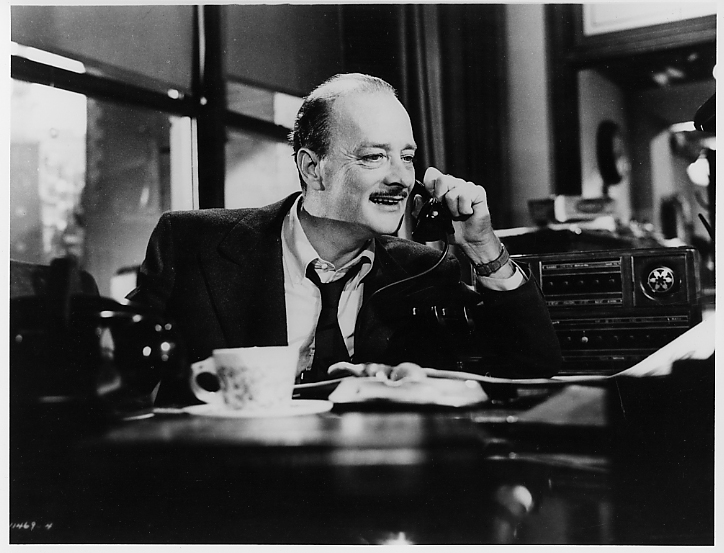
Boston Morning Express editor George Degnan (Robert Keith) threatens to fire correspondent Pete Garvey (Bing Crosby) if he doesn't shape up and do his job in Here Comes the Groom (Paramount Pictures, 1951).
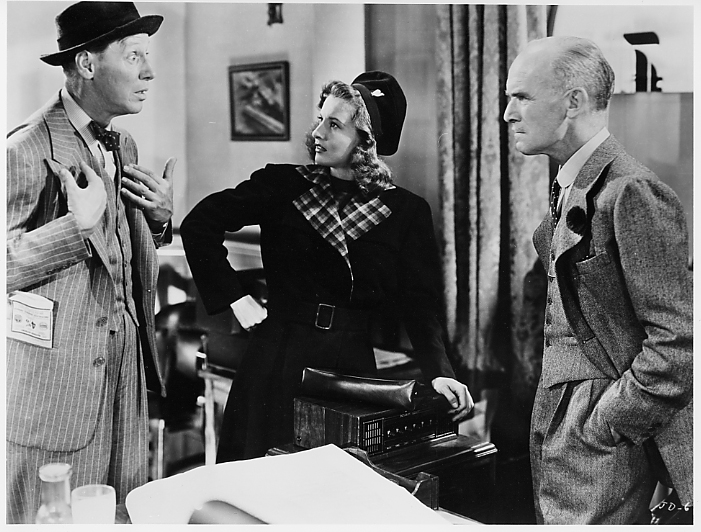
Angry New Bulletin managing editor Henry Connell (James Gleason) and columnist Ann Mitchell (Barbara Stanwyck) listen to reporter Beany's (Irving Bacon) lame excuses in Meet John Doe (Frank Capra Productions, 1941).
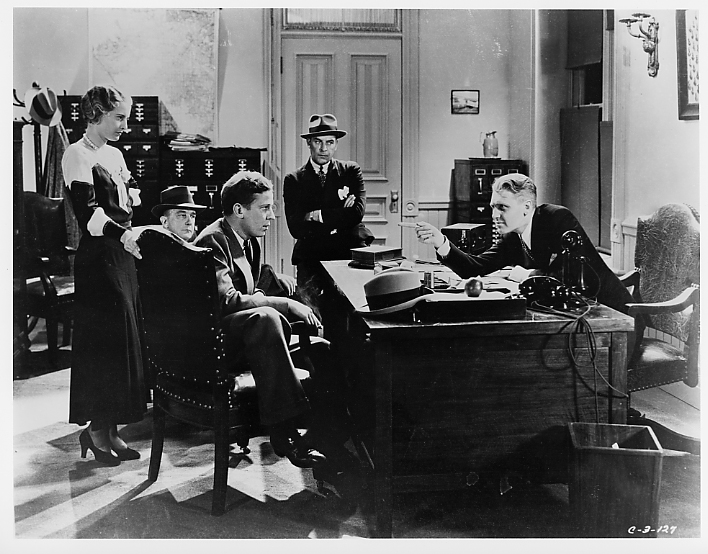
managing editor Al Holland (Ralph Bellamy) chews out his reporters because they can't get the dirt on a candidate for govenor in Forbidden (Columbia Pictures, 1932). Lulu Smith, the advice-to-the-lovelorn columnist
"Mary Sunshine" (Barbara Stanwyck), watches in fear, since she is the politician's secret lover and mother of his adopted child.
THE PUBLISHERS AND MEDIA TYCOONS
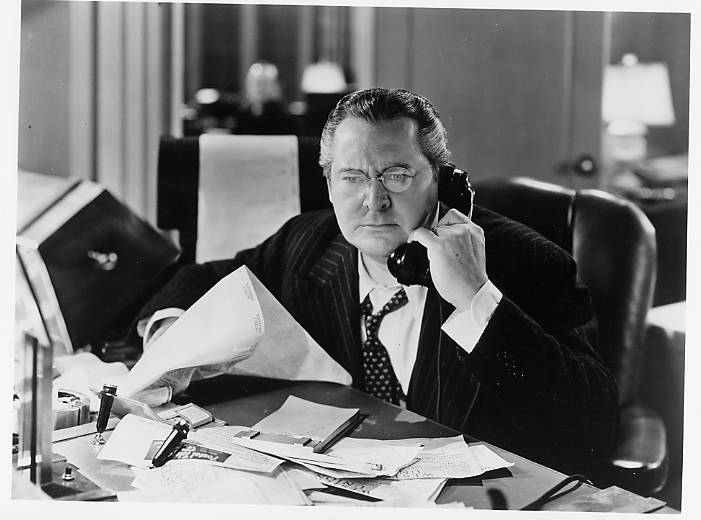
Jim Taylor (Edward Arnold) is as brutal a media tycoon as ever put on film in Mr. Smith Goes to Washington (Columbia Pictures, 1939).
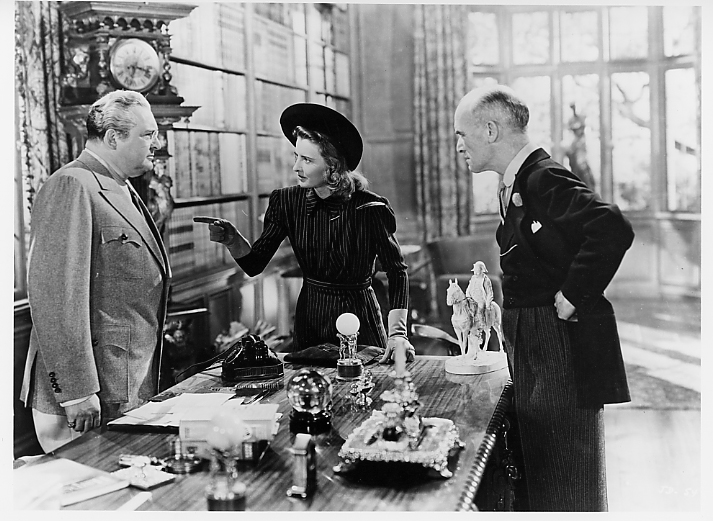
Ann Mitchell (Barbara Stanwyck) tries to persuade New Bulletin publisher D.B. Norton (Edward Arnold) of the value of the fake John Doe as a legitimate story, but skeptical editor Henry Connell (James Gleason) doesn't like the entire scheme in Meet John Doe (Frank Capra Productions, 1941).
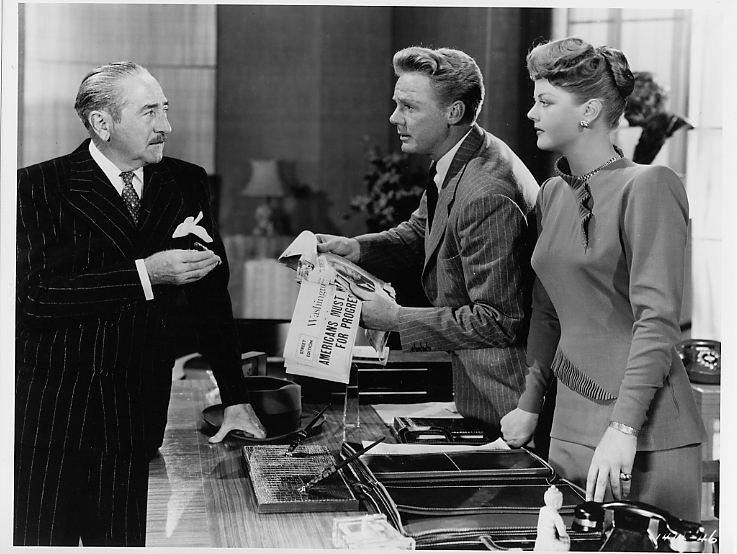
Kay Thorndyke (Angela Lansbury), head of the powerful Thorndyke Press, and Spike McManus (Van Johnson), a cynical columnist, team up with a political adviser (Adolphe Menjou) to figure out how to take over the White House in State of the Union (Universal, 1948).